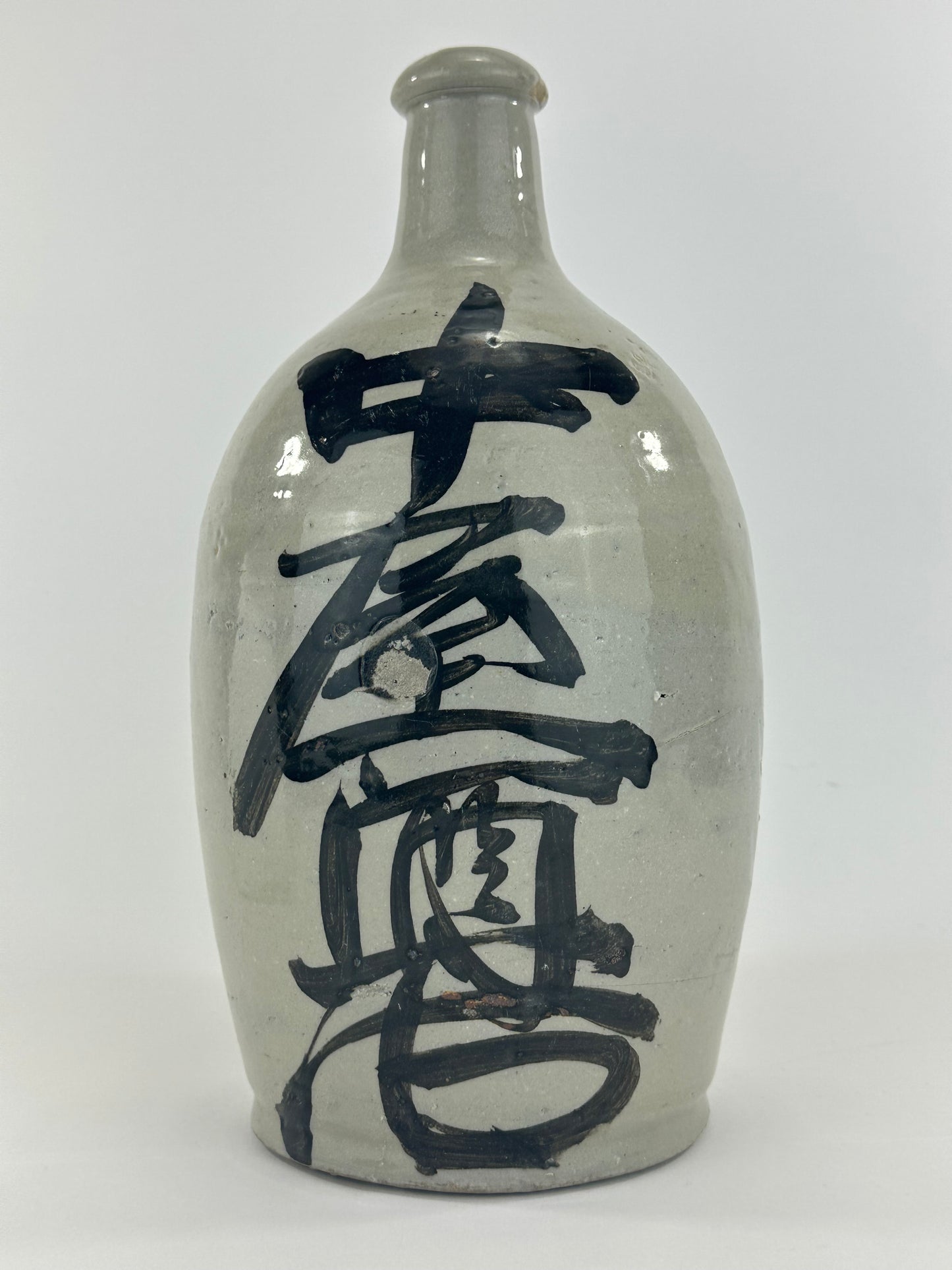Antique Japanese 1800's Tokkuri Sake Jug Calligraphy Ceramic Vase 10" Nakaya
Antique Japanese 1800's Tokkuri Sake Jug Calligraphy Ceramic Vase 10" Nakaya
Couldn't load pickup availability
Antique Japanese Tokkuri – "中屋" (Nakaya) Sake Storage Jar
Japan, late Edo to Meiji period (1800's)
Dimensions: 10.5" H × 5.5" Dia.
This Japanese tokkuri (徳利) was traditionally used for storing and serving sake, Japan’s fermented rice wine. Larger examples such as this one were typically employed by brewers, inns, or taverns for transport and bulk storage, often sealed with paper or cloth and secured with twine.
Thrown by hand on the potter’s wheel, these jugs were high-fired stoneware or earthenware, coated in a durable shiro glaze (white slip or feldspathic glaze) and often boldly brushed with calligraphic characters denoting the brewer’s mark, establishment name, or the sake brand. The iron-oxide brushwork—frequently applied with swift, expressive movements—reflects both functional labeling and aesthetic tradition, evoking Japan’s enduring wabi-sabi sensibility. This piece says 中屋 (Nakaya).
Regional variations in clay and firing atmosphere produced subtle differences in tone, texture, and glaze pooling, while kiln firing left occasional natural imperfections and kiln marks, celebrated as part of their rustic charm.
Today, these vessels are valued not only as artifacts of Japan’s folk craft (mingei) heritage but also as striking decorative pieces that embody the energy of daily Edo- and Meiji-era life. Ideal for display in interiors blending Japanese and modern design aesthetics.
























